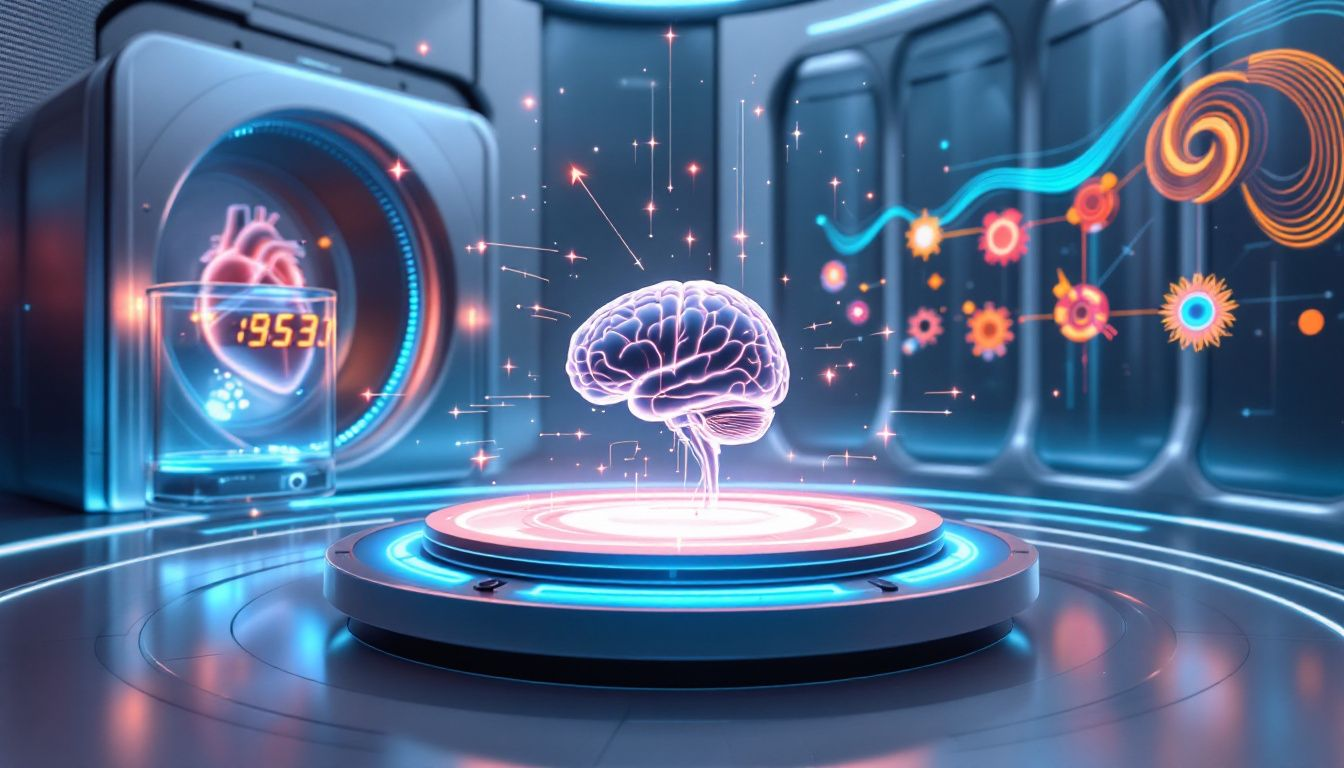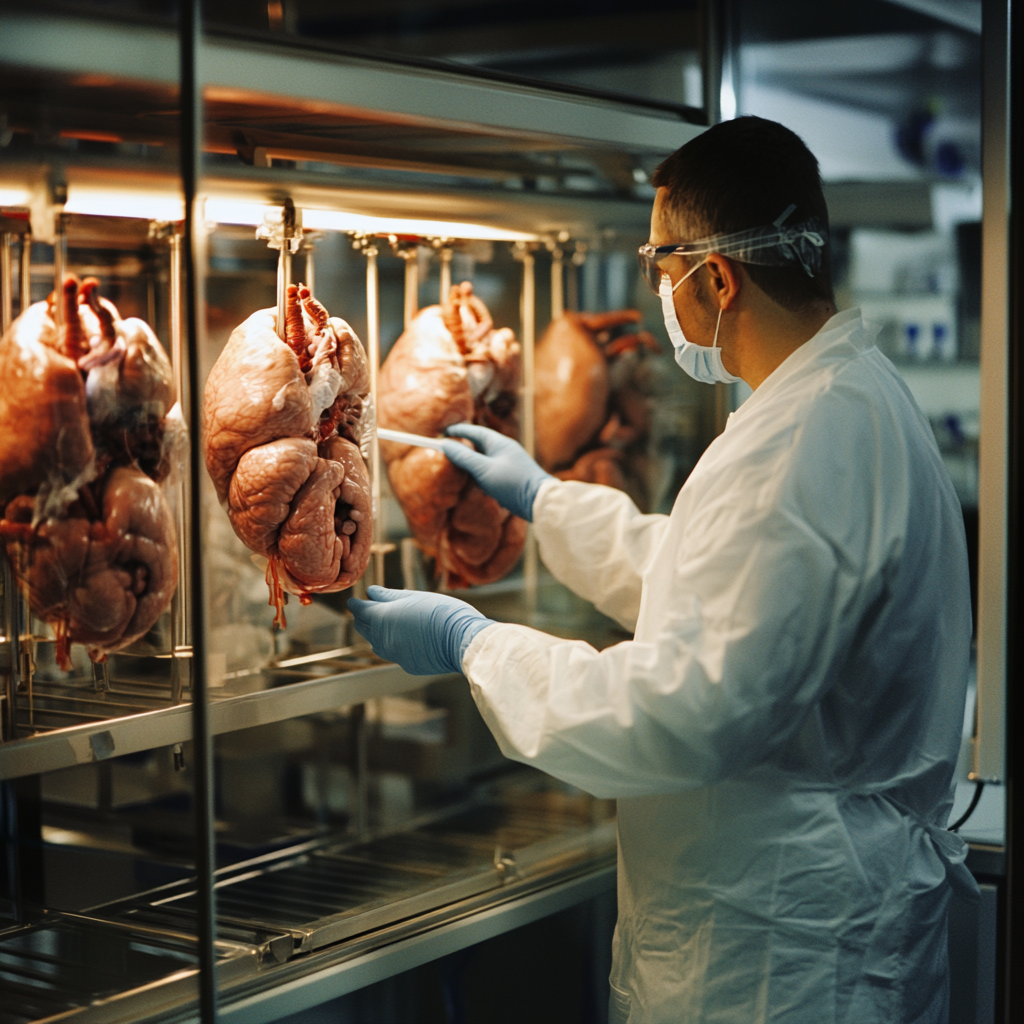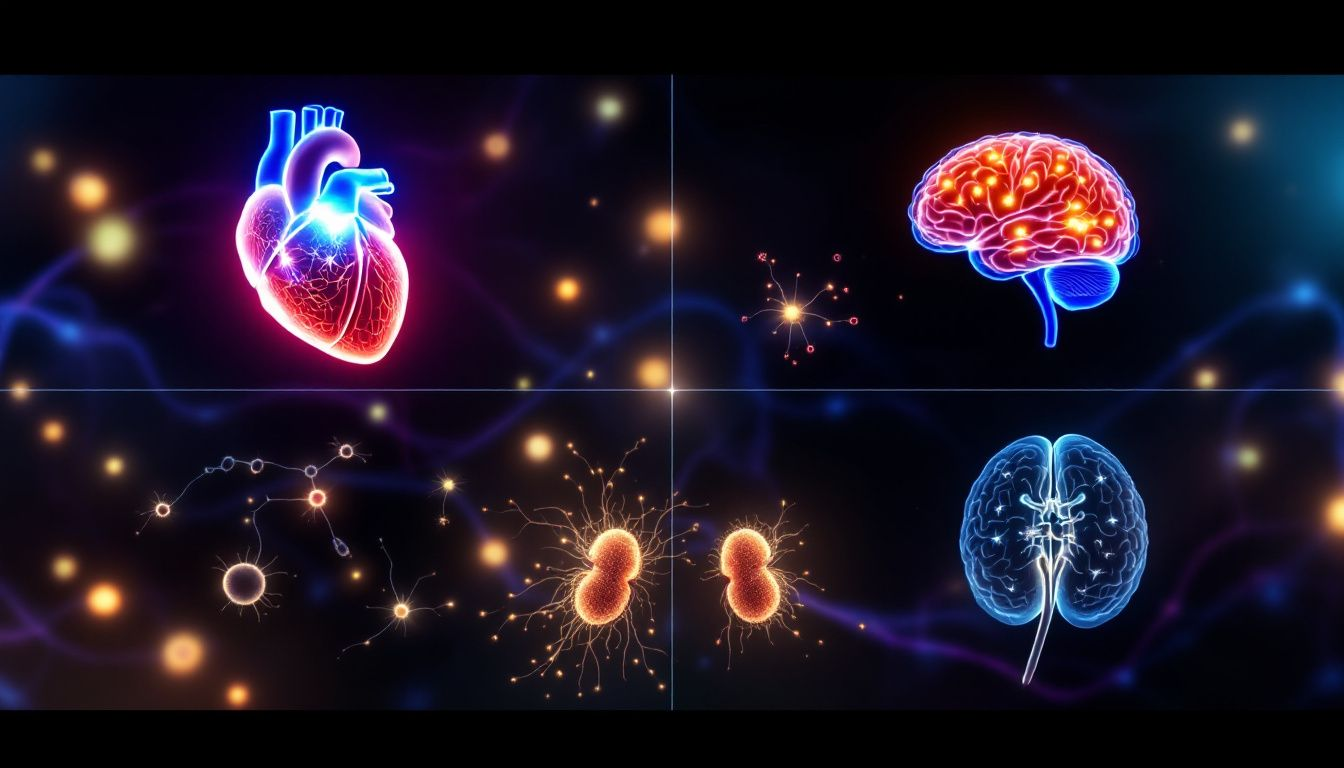The Science Behind Organ Preservation: Advancements and Challenges
The science behind organ preservation is vital for successful organ transplantation, ensuring donated organs remain viable. This article delves into the latest advancements and persistent challenges in organ preservation. You will read about techniques like machine perfusion and cryopreservation, their role in mitigating ischemia and oxidative stress, and how these methods prolong organ viability.
Key Takeaways
Advanced techniques in organ preservation, such as machine perfusion methods, are crucial for maintaining organ viability, particularly for marginal donor organs.
Challenges like ischemia and oxidative stress significantly impact organ preservation, necessitating continuous research and innovative strategies to enhance transplant outcomes.
Emerging solutions and therapies, including gene therapy and pharmacological interventions, are paving the way for improved organ preservation and overall transplantation success.
The Science Behind Organ Preservation: Advancements and Challenges
Organ preservation serves as a vital process to ensure donor organ quality for transplantation. Maintaining high-quality donor organs is crucial for successful transplants, requiring techniques that prevent hypoxic injury. In the past 50 years, research has significantly advanced transplant techniques. These advancements have evolved to tackle the challenges posed by ischemia and oxidative stress.
One of the pivotal elements in organ preservation is the use of advanced machine perfusion techniques. These include hypothermic, normothermic, and subnormothermic methods, each tailored to different organ types and preservation needs. Hypothermia, in particular, helps maintain organ quality by decelerating biological processes. Cooling methods significantly slow biological deterioration, leading to better preservation outcomes.
The advancement of organ preservation has involved overcoming numerous obstacles. Ischemia, a condition characterized by inadequate blood supply to an organ, and oxidative stress, which occurs when there’s an imbalance between free radicals and antioxidants in the body, are two major challenges. These conditions can severely damage organs during the preservation process. However, with continuous research and innovative approaches, these hurdles are being addressed more effectively than ever before.
Advanced machine perfusion has revolutionized how we think about organ preservation. Technologies that mimic physiological conditions help keep organs viable for longer, extending the timeframe for successful transplantation. This not only improves outcomes for patients but also allows for better utilization of available donor organs, addressing the critical issue of organ shortage.
These advancements are highly significant. With the increasing demand for transplantable organs, there is more pressure to optimize organ transport and utilize marginal donor organs effectively. These are organs that may not meet the highest quality standards but can still be viable with the right preservation techniques. Effectively preserving these organs can result in saving more lives.
Ultimately, the science of organ preservation showcases human ingenuity and perseverance. As we continue to push the boundaries of what is possible, the future of organ transplantation looks brighter, promising better outcomes for patients worldwide.
Introduction
Organ transplantation has been a significant advancement in medicine for those with end-stage organ failure. However, the increasing shortage of organs for organ donation and organ sharing is putting immense pressure on the medical community to use more marginal organ donors.
Organ transplantation is vital for those with end-stage organ failure, yet the growing demand for transplantable organs poses significant challenges.
History of Organ Preservation Techniques

The history of organ preservation is a fascinating journey that mirrors the evolution of medical science. Organ preservation is essential for maintaining the quality of donor organs for transplantation. Organ transplantation represents a major medical advancement, especially for treating end-stage organ failure. In the past 50 years, research has significantly advanced transplant techniques, including organ and tissue preservation.
Early methods of organ preservation were rudimentary, focusing primarily on cooling techniques to slow down the biological processes that lead to organ deterioration. Hypothermia played a key role in preserving high-quality donor organs. The first notable advances began with the creation of acellular solutions that mimic the electrolyte balance of mammalian cells. This was a groundbreaking step that laid the foundation for modern preservation techniques.
The introduction of Collins solutions marked a significant milestone in organ preservation. These solutions were among the first to be successfully used globally for kidney preservation. Understanding hypoxic injury, caused by oxygen deprivation, is crucial for improving preservation methods and ensuring successful transplant outcomes.
As research advanced, attention shifted to tackling ischemia and oxidative stress challenges. Ischemia, the lack of adequate blood supply, and oxidative stress, the imbalance between free radicals and antioxidants, are two major hurdles in organ preservation. Advances in machine perfusion, including hypothermic, normothermic, and subnormothermic methods, have been applied to various organ types to mitigate these challenges.
Cooling techniques, essential for slowing biological deterioration, have evolved significantly. These techniques enable successful organ preservation by reducing metabolic rates and the risk of ischemic injury. The evolution of organ preservation techniques has been driven by continuous research and a deep understanding of the underlying biological processes.
In conclusion, the history of organ preservation exemplifies the relentless pursuit of medical innovation. From early cooling methods to advanced machine perfusion techniques, each step has brought us closer to ensuring the viability and quality of donor organs, ultimately saving more lives through successful transplantation.
Static Cold Storage (SCS)
Static cold storage (SCS) is one of the most widely used methods in organ preservation. Designed to reduce cellular metabolism and oxygen requirements, static cold storage plays a crucial role in maintaining the viability of donor organs during the preservation period. Cooling organs via static cold storage significantly lowers mitochondrial function, reducing ATP levels and potentially causing cellular swelling and apoptosis.
While static cold storage is effective in slowing down biological processes, it is not without its limitations. Marginal organs, which are often at a higher risk of failure due to cold ischemia, present a significant challenge. These organs are frequently not utilized in transplants, underscoring the need for more advanced preservation techniques that can better manage the risks associated with cold ischemia.
In summary, static cold storage remains a crucial tool in organ preservation. However, its limitations highlight the importance of continued research and innovation in developing more effective preservation methods, especially for marginal organs.
Did you know that you can get from Manhattan to JFK in under 5 minutes without driving?
Blade offers seamless helicopter transfers from our West 30th Street Lounge in Manhattan to JFK Airport in just 5 minutes from $195 per seat.
Skip the traffic and ditch the stress with Blade's year-round airport service.

Hypothermic Machine Perfusion (HMP)
Hypothermic machine perfusion (HMP) represents a major advancement in organ preservation technology. Operating at temperatures between 4°C and 10°C, HMP provides a controlled environment that reduces cellular metabolic rates, thereby decreasing the metabolic needs of the organs. This method is rapidly evolving and has the potential to become the clinical standard for organ preservation in transplantation.
One of the key components of HMP is the UW solution, particularly with gluconate, which has shown effectiveness as a perfusate formulation. This solution helps maintain the physiological conditions necessary for preserving organ function during the hypothermic perfusion process.
HMP offers several advantages over traditional static cold storage. Actively perfusing the organ with a preservation solution, HMP significantly improves organ viability and function. This method also allows for extended preservation times, which is critical in the context of organ transplantation where timing can be a matter of life and death.
In conclusion, hypothermic machine perfusion is a promising advancement in organ preservation. Its ability to reduce metabolic rates and actively maintain physiological conditions makes it a valuable tool in ensuring the viability and function of donor organs through hypothermic machine preservation.
Normothermic Machine Perfusion (NMP)
Normothermic machine perfusion (NMP) technology is a groundbreaking development in the field of organ preservation. This method reconditions high-risk organs ex-situ with targeted therapeutic interventions, maintaining them at physiological temperatures. NMP devices include components such as an oxygenator and a pump to maintain blood flow and temperature during organ preservation.
One of the significant advantages of NMP is its potential to increase the usability of suboptimal organs, such as those from donors after cardiac death. By keeping livers fully functional, NMP allows for viability assessment before transplantation, ensuring that only the best-quality organs are used.
Machine perfusion, including NMP, enables comprehensive organ function assessment and can restore tissue energy more effectively than static cold storage. This method has shown promising results in reducing the negative consequences of cold ischemia time, which is a major challenge in kidney transplantation.
In conclusion, normothermic machine perfusion offers a new horizon in organ preservation. Maintaining organs at physiological temperatures and allowing for viability assessments, NMP significantly enhances the prospects for successful transplantation.
Subnormothermic Machine Perfusion (SNMP)
Subnormothermic machine perfusion (SNMP) operates at 21°C, balancing reduced metabolic demands with maintaining organ viability. This method has shown significant improvements in liver function indicators such as urea and albumin production during preservation.
SNMP has been particularly effective in restoring liver ATP levels, which suggests improved mitochondrial function, crucial for post-transplant outcomes. The process also leads to a notable decrease in lactate levels, indicating better metabolic recovery of the liver.
In summary, subnormothermic machine perfusion enhances bile production and composition, reducing biliary complications in liver transplants. This method shows minimal injury to liver tissues, confirming its potential for preserving marginal donor livers.
Advanced Preservation Solutions

Research shows that various preservation solutions, each with specific advantages for different organs, play a crucial role in organ preservation. The University of Wisconsin (UW) solution is recognized as the benchmark for organ preservation, with most other solutions compared against its effectiveness. Components like lactobionate and raffinose make the UW solution suitable for universal multiple organ preservation.
HTK solution’s lower viscosity allows for more efficient organ flushing during procurement. One of its advantages is that it stabilizes cell membranes, making it a valuable tool in organ preservation.
IGL-1 is a newer preservation solution that has shown superior early function in kidney transplantation compared to UW solution. Its composition, designed to mitigate cellular damage from reactive oxygen species during storage, includes polyethylene glycol (PEG), which helps create high osmotic pressures without interacting with biological substances.
In conclusion, advanced preservation solutions like UW, HTK, and IGL-1 enhance outcomes in organ transplantation. By addressing the specific needs of different organs, these solutions enhance the viability and function of preserved organs, ultimately saving more lives.
Cryopreservation and Subzero Techniques
Cryopreservation and subzero techniques represent the frontier of organ preservation. Ice formation during organ preservation is a key challenge these techniques aim to overcome. Cryoprotectants, substances that reduce ice formation, are crucial in preserving organs at low temperatures.
Techniques like vitrification aim to cool organs to a glass-like state, avoiding ice formation altogether. Subzero organ preservation methods are essential for improving the logistics and viability of organ transplantation. Supercooling at temperatures around -6°C has shown promising results, allowing for organ preservation for several days without freezing.
In conclusion, recent advances in cryopreservation suggest that supercooled organs maintain cellular functions better than those stored at standard cold storage temperatures. These advancements have the potential to enhance long-term organ storage, improving transplantation outcomes.
Organ-Specific Preservation Strategies

Different organs need tailored preservation strategies to ensure viability and function post-transplantation. Kidney preservation uses both static and dynamic methods, with hypothermic machine perfusion as a leading strategy to reduce delayed graft function.
Liver preservation can be achieved through static cold storage and hypothermic machine perfusion, addressing challenges like biliary complications and ischemia-reperfusion injury.
Heart preservation is particularly challenging due to the sensitivity of cardiac tissue to hypoxia, necessitating strategies like controlled rewarming to enhance viability.
Kidney Preservation
The kidney, being the most commonly transplanted organ, underscores its critical role in transplantation, highlighting the role of air transport in kidney transplants for timely and efficient delivery to recipients. Static cold storage supports good early kidney graft function but is limited by the safe duration of preservation, as prolonged cold ischemia can cause significant cellular damage.
Ex vivo machine perfusion enhances the preservation and assessment of kidney allografts while reducing cold storage time, demonstrating an innovative approach for improving organ viability.
Liver Preservation
Liver transplantation is a major advancement in medicine, offering a lifeline to patients with end-stage liver disease. The introduction of the University of Wisconsin (UW) solution significantly improved liver preservation practices. Despite this, static cold storage (SCS) remains the most common method for clinical liver preservation, although it has its limitations.
Ischemia-reperfusion injury remains a crucial challenge in liver transplantation, often exacerbated by inadequate preservation techniques. Hypothermic machine perfusion (HMP) can effectively reduce the risk of ischemia-reperfusion injury and enhance the recovery of liver grafts by maintaining physiological conditions. This method not only helps in preserving liver function but also allows for better assessment and reconditioning of the organ before transplantation.
Normothermic machine perfusion (NMP) shows significant promise in liver preservation. Incorporating a defatting protocol during NMP significantly reduces triglyceride levels in fatty livers, enhancing their viability for transplantation. Additionally, bioactive gases such as carbon monoxide have been found to have protective effects on organs during preservation by reducing inflammation.
In conclusion, liver preservation techniques have significantly evolved, with advanced methods like HMP and NMP offering better outcomes. These techniques address the critical challenges of ischemia-reperfusion injury and improve the viability and function of liver grafts, ultimately leading to more successful liver transplants.
Heart Preservation
Heart preservation faces unique challenges due to cardiac tissue’s sensitivity to hypoxia, as detailed in how heart transplants are transported, which emphasizes the importance of precise timing and advanced preservation techniques. The typical preservation duration for cardiac static cold storage is only 4–6 hours, necessitating prompt transplantation. Inadequate heart preservation can lead to poor early graft function, high morbidity, and mortality rates, making careful selection of donor hearts crucial.
The Celsior solution, used for heart transplantation, contains key components like high Na+, lactobionate, mannitol, histidine, and reduced glutathione. Hypothermic machine perfusion provides metabolic support to preserve cardiac function by addressing the heart’s sensitivity to hypoxia. However, the UW solution raises concerns as some of its components may alter cardiac muscle physiology, compromising early contractility.
In summary, heart preservation demands meticulous techniques to ensure donor heart viability. Advanced preservation solutions and hypothermic machine perfusion offer promising methods to enhance the preservation and function of cardiac tissues, leading to better transplantation outcomes.
Did you know that you can get from Manhattan to JFK in under 5 minutes without driving?
Blade offers seamless helicopter transfers from our West 30th Street Lounge in Manhattan to JFK Airport in just 5 minutes from $195 per seat.
Skip the traffic and ditch the stress with Blade's year-round airport service.

Ex Vivo Machine Perfusion and Organ Repair
Ex vivo machine perfusion is a revolutionary approach, offering a protective environment that reduces the risks of ischemia-reperfusion injury. This method allows for real-time assessment of organ function prior to transplantation, which is particularly beneficial for high-risk organs. For instance, storage time of up to 3 days is now possible through prolonged ex vivo machine liver perfusion.
Isochoric preservation, maintaining organs at constant volume and temperature, is enabling new applications and technologies in organ preservation. Insights gained from liver and kidney perfusion are helping to develop perfusion technologies for other organs, expanding the potential of ex vivo machine perfusion.
Various therapeutic agents, including mesenchymal stem cells, can be administered during machine perfusion to optimize the condition of the organs being preserved. These agents help in reducing inflammation, promoting tissue repair, and enhancing overall organ viability.
In conclusion, ex vivo machine perfusion and organ repair are significant advancements in organ preservation. By allowing for extended storage times, real-time assessment, and therapeutic interventions, these methods enhance the quality and viability of donor organs, paving the way for more successful transplantations.
Pharmacological Interventions in Organ Preservation

Pharmacological interventions are crucial for enhancing organ preservation. These strategies aim to counteract the negative effects of oxidative stress during the preservation process. Antioxidants are commonly used to reduce the damage caused by reactive oxygen species, which can significantly impact organ viability.
Studies show that combining hypothermia and antioxidants can enhance organ function preservation. Targeted perfusion solutions have emerged as a newer method that may enhance the treatment and assessment of marginal organs, making them more suitable for transplantation.
In summary, pharmacological interventions are essential for improving organ preservation outcomes. By mitigating the effects of oxidative stress and enhancing organ function, these strategies contribute to the overall success of organ transplantation.
Gene and Cell Therapy Innovations
Gene and cell therapy innovations are pioneering new frontiers in organ preservation. Gene therapy can be integrated into machine perfusion processes to enhance organ preservation and improve transplant outcomes. This approach can potentially reduce ischemia-reperfusion injury and enhance organ preservation outcomes.
Stem cell transplantation can provide biologically active molecules that assist in organ storage and improve viability. Additionally, using anti-inflammatory cytokines for donor pre-treatment can improve the state of the organ after cold exposure, potentially mitigating storage-related damage.
In conclusion, gene and cell therapy innovations offer a promising avenue for enhancing organ preservation. These advanced techniques offer new possibilities for improving the viability and function of donor organs, ultimately leading to better transplantation outcomes.
Current Practices and Future Directions
Organ preservation has seen significant advancements over the past 50 years, with research leading to improved transplant techniques and better outcomes. The worldwide increase in organ transplantation is placing pressure on research for improved organ preservation methods. A major limitation of static cold storage is its lack of active perfusion, which can exacerbate injury and prolong recovery time.
The use of marginal organs from deceased donors is increasing due to the growing demand for transplantable organs. Advanced machine perfusion, including hypothermic, normothermic, and subnormothermic methods, is being applied to various organ types to address the challenges posed by ischemia and oxidative stress. Understanding hypoxic injury is crucial for improving organ preservation methods and ensuring successful transplantation outcomes.
NMP has been linked to improved graft survival rates and reduced early allograft dysfunction in liver transplantation. Additionally, targeted perfusion solutions have emerged as a newer method that may enhance the treatment and assessment of marginal organs. NMP can potentially decrease the inflammatory response in grafts post-transplantation, promoting better outcomes.
In conclusion, current practices in organ preservation are evolving, with research focusing on techniques that target the molecular processes leading to organ injury. The future of organ preservation looks promising, with ongoing advancements and innovative approaches paving the way for better transplantation outcomes.
Bottom Line: The Science Behind Organ Preservation: Advancements and Challenges
In summary, organ preservation is a critical component of successful organ transplantation. From the historical development of preservation techniques to advanced methods like hypothermic and normothermic machine perfusion, the field has seen significant advancements. These techniques address the challenges of ischemia-reperfusion injury and improve the viability and function of donor organs. As research continues to push the boundaries of what is possible, the future of organ preservation looks brighter, promising better outcomes for patients worldwide.
FAQs about The Science Behind Organ Preservation
What is the role of organ preservation in transplantation?
Organ preservation is crucial in transplantation as it ensures the viability and quality of donor organs, thereby preventing hypoxic injury and maintaining organ function until surgery. This process significantly enhances the likelihood of successful transplants.
How has organ preservation evolved over the years?
Organ preservation has transformed significantly over the past 50 years, with innovations such as advanced machine perfusion methods and improved preservation solutions that effectively mitigate ischemia and oxidative stress. These advancements have enhanced the viability and success of transplanted organs.
What are the limitations of static cold storage (SCS)?
Static cold storage (SCS) is limited by the risk of significant cellular damage and reduced organ viability due to prolonged cold ischemia, especially in marginal organs. Thus, its effectiveness diminishes over extended periods.
How does hypothermic machine perfusion (HMP) improve organ preservation?
Hypothermic machine perfusion (HMP) significantly enhances organ preservation by operating at low temperatures, which reduces cellular metabolic rates while maintaining physiological conditions. This controlled environment ultimately improves organ viability and function compared to traditional static cold storage methods.
What future directions are being explored in organ preservation research?
Organ preservation research is increasingly emphasizing the enhancement of preservation techniques that mitigate molecular injury, the advancement of machine perfusion methods, and the exploration of gene and cell therapy to improve organ viability and function. These directions aim to significantly improve transplantation outcomes.
Disclaimer:
Please be aware that the content on this page has been generated by using artificial intelligence language models and may contain errors, inconsistencies, or outdated information. It is provided as-is without any warranties or guarantees of accuracy. We strongly recommend using this content as a starting point for further research. We disclaim any liability for damages or losses resulting from the use or reliance on this content.